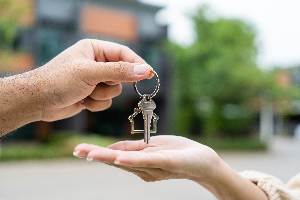
Using KiwiSaver for at least part of the deposit, as well making full use of the low deposit lending allowances at the banks under the LVR rules, first home buyers (FHBs) resilience in the property market is hovering at or about record highs.
Cotality's June Buyer Classification data shows an active FHB market amid ongoing, but slightly lesser, affordability challenges.
They have accounted for a touch more than 26% of total property purchases over the past three months.
Christchurch and Dunedin came in at 27% for FHBs in Q2, with Auckland at 29%, Hamilton 32%, and wider Wellington higher still at 36%. In a busier overall market, the number of FHB deals is steadily rising around the country too.
Why is this happening? The fact that property values nationally remain 16% below the peak is a factor in buyers’ favour, as is the still-strong desire to “get on the ladder” despite mortgage costs typically being higher than rents.
More affordable end
At the same time, mum and dad investors continue to gravitate towards more affordable parts of the market.
Mortgaged multiple property owners (MPOs, including investors) are on the comeback trail, accounting for about 23% of purchases. – still shy of their long-term average of about 25%, but up from the trough of 21% in the middle of last year.
Among the main centres, Auckland and Christchurch had 26% of activity go to mortgaged MPOs in the second quarter, with Hamilton a little higher again at 27%.
A closer look at the data reveals that this rebound for MPOs is being led by smaller investors. Those with a total portfolio of up to four properties (including their own home) and still buying have bumped the market rise from 12% to 14%.
Meanwhile, there’s also been an increasingly active focus toward the more affordable end of the market. Mortgaged MPOs’ share of purchases in the bottom 30% of properties by value has risen from 21% last year to 24% so far this year.
There is also growing preference among mortgaged investors for existing properties (as opposed to new-builds). So far they’ve accounted for 23% of existing property purchases this year, up from 20% last year.
Cotality chief property economist Kelvin Davidson says this is not surprising as existing properties no longer have the same tax disadvantages they carried when interest deductibility was being phased out, and the abundance of listings on the market probably also means some savvy investors can pick up bargains in the lower price brackets, potentially with higher rental yields.
“Similarly, lower mortgage rates will be making property investment more appealing to a wider range of mums and dads, given that they directly reduce the cashflow top-ups out of other income that are typically required on a rental property purchase.”
He says over the past year or so, a typical top-up might have fallen from $400-$500 per week to about $200.
“That said, it’s not all one-way traffic for investors. Rents have generally gone flat lately, even dipping in key markets such as Auckland and Wellington, costs such as council rates continue to rise, and the debt-to-income ratio rules for mortgage lending might just be starting to bite for some would-be investors.”




Comments
No comments yet.
Sign In to add your comment